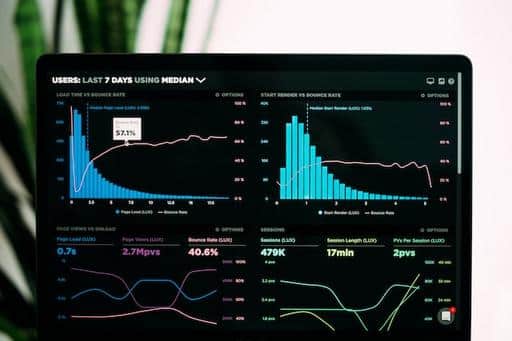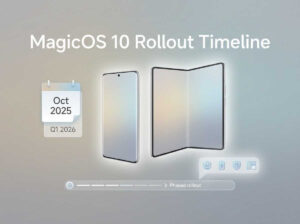The digital universe is constantly expanding, with more data being created every single day. In fact, data production is accelerating at such a rapid rate that around 90% of all of the data available to us from human history was created in the last two years. In 2023, businesses have to collect, aggregate, and draw meaning from large volumes of data than ever before.

In order to effectively manage the growing data ecosystem, we have before us, businesses make use of what is known as a data pipeline. Data pipelines are the infrastructure that carries data from its initial touchpoint as raw information all the way to neat infographics and actionable insights that businesses can use.
However, data pipeline architecture has evolved a great deal over the years. To more effectively manage huge quantities of data and deliver timely insights, data pipelines are now an incredibly refined system. In this article, we’ll trace the data pipeline architecture from start to end, demonstrating what happens to data at each step and how data transforms across its journey.
Let’s dive right in.
Table of Contents
What Exactly Is Data Pipeline Architecture?
Data pipeline architecture is a system that facilitates the movement, transformation, and structuring of data across multiple stages. Most of the time, this architecture collects data from many locations and then moves it through distinct steps in order to clean, structure, and ensure that data is compatible with processing mechanisms.
Pipeline architecture is not readily accessible to all businesses. Although there are some automated systems, most businesses will need to work with data engineers to design and optimize their data infrastructure. Working with data engineers is especially important as they will be able to build checks and considerations for the quality, integrity, and security of data that moves through your architecture.
Data pipeline architecture is absolutely critical in the modern world, forming the foundation of all data-driven businesses we see.
Tracing the Data Pipeline Architecture: Data Movements
Before businesses can draw insight from data, it needs to be in a format that is compatible with the analytics systems and tools that the company uses. Although some data is already in a structured format, this is rarely the case. In fact, around 90% of all data is unstructured, meaning that it needs to go through several transformation stages in order to work with certain analytical tools.
The process begins with data collection, moves through transformation and storage, and finally into processing, where it is turned into actionable insights and useful information. In order to get a better idea of what exactly happens to data in each of these stages, let’s explore the following core stages:
-
Collecting Raw Data
-
Data Transformations
-
Data Storage
-
Data Processing
-
Data Delivery
Let’s break these down further.
More on TechInDeep
- Revolutionizing Business Communication and Shopping Experience
- Are QR Codes Safe?
- 10 Hidden Mac Features You Need to Know About
Collecting Raw Data
Especially in the modern day, there are now more ways than ever before to collect data. While we once had access to a fairly narrow selection of data formats, this world has expanded over the past decades to represent every type of data under the sun. Beyond just numbers and structured files, data could be anything from results from web scraping to a podcast recording.
At this stage, analysts collect data from various sources, checking it against their compliance and regulation rules to ensure it is up to the quality and security levels their business requires. This raw data is then funneled into the data pipeline, acting as the data that’s going to take a journey throughout this article.
Data Transformations

The transformation stage allows businesses and analysts to change raw data from its original form into a form that lends itself to analysis. While engineers can run analysis on unstructured data, raw data is much harder to draw meaning from, as well as more difficult to categorize for storage.
Due to this, analysts will transform data by cleaning, aggregating, joining, or even adding additional data like metadata. This stage ensures that data is in a state that’s perfect for storage, which is where all of the analysis will start to take place.
Data Storage
In the data storage stage, the transformed data is now moved to storage systems, like data lakes, data warehouses, and individual databases. Once in these structures, the durability and availability of the data are increased, helping to ensure that businesses always have access to the data they need.
At this stage, data engineers might partition or index data, optimizing their ability to retrieve data and run queries on it.
Data Processing
At this stage of the data pipeline, data enters into processing frameworks like Apache Spark, Apache Flink, Hadoop, or another system a business favor. Over time, the systems and the techniques that are used have become increasingly effective. For example, distributed query processing helps to scale data processing, boosting processing speeds by distributing query workloads.
The development of techniques like distributed query processing help businesses to achieve the high performance that they need to process huge quantities of data at once. This is critical in modern data analytics, providing scalable systems.
Depending on the specific framework infrastructure that a business is using, data that moves through this stage may go through batch or real-time processing.
Data Delivery
Finally, data arrives at the delivery stage, where it flows out of the data pipeline and downstream into analytical systems. These systems or APIs are linked with data visualization tools. Within this final stage, data analysts can use the data to reveal trends, spot new developments, or create concise insights that businesses will then use.
At this stage, data has already been refined, meaning that it can instantly then flow into analytical tools. Beyond just further tools, delivery could also encompass the delivery of data to customers or users. For example, an API might take data from the pipeline and then distribute it to many different customers, providing real-time experience.
This final stage is where users and businesses can get the most use out of data, as it is ready, actionable, and in a format that is structured for analysis. Thus, we come to the end of the data pipeline.
Final Thoughts
By tracing the data pipeline architecture from the early stages all the way to the final product, we can effectively see the journey that data goes on before becoming useful insight. Understanding this process gives us the ability to more effectively engage with data, boosting our ability to draw meaning and contextualize it.
Across collection, transformation, storage, processing, and delivery, data goes through its core stages, radically shifting into a useful, malleable, and quarriable unit for further analysis.








MAKECOMMENT